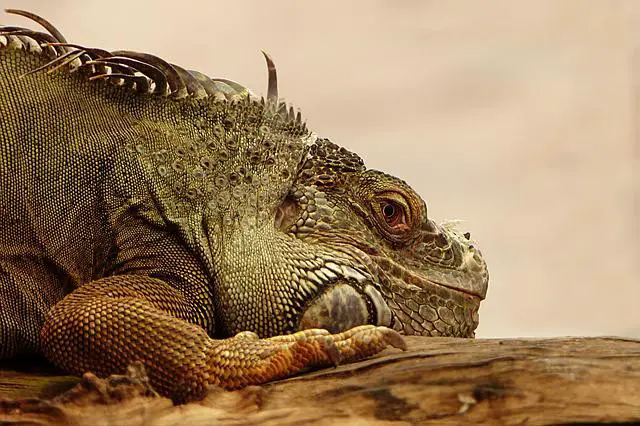Green iguanas are commonly thought of as exotic pets. They are beautiful creatures that can grow to be over six feet long. However, many people do not realize that green iguanas are invasive species. This blog post will explore why the green iguana is an invasive species and what steps should be taken to prevent its spread.
How invasive are Iguanas?
Native to Central and South America, green iguanas were introduced to Florida in the 1960s.
They were believed to be brought over as pets and then released into the wild when they became too big to care for.
Since then, green iguanas have become a problem in Florida. They are considered an invasive species because they compete with native wildlife for food and resources and can also spread disease to native animals.
In recent years, the problem has gotten worse.
The population of green iguanas in Florida has exploded due to the lack of predators and the abundance of food. These lizards can lay up to 50 eggs at a time, increasing their numbers quickly. Green iguanas have been known to damage crops, eat young birds in nests, and even knock down power lines.
The best way to prevent the spread of green iguanas is to not release them into the wild if you no longer want them as a pet.
Several reptile sanctuaries around Florida will take unwanted iguanas off your hands. Education about these animals is also essential before getting one as a pet.
Researching their natural habitat and diet can help you better care for them so that you are less likely to release them into the wild later on.
Are Green Iguanas dangerous to humans?
Green iguanas are popular pets, but they can be dangerous to humans.
These giant lizards can grow up to six feet long and have sharp claws and teeth. They also have a muscular tail that can be used to deliver a painful blow.
In addition, green iguanas are known to be aggressive, and they have been known to attack humans when they feel threatened. As a result, it is essential to exercise caution when around these reptiles.
If you are considering getting a green iguana as a pet, make sure you do your research and understand the risks involved.
What are the signs that a green Iguana is ready to attack you?
It’s essential to identify the signs that a green iguana is preparing to attack, as they can be pretty aggressive when they feel threatened.
One of the first things you’ll notice is that the iguana will start to bob its head up and down. This behavioral pattern is known as ‘threat display,’ designed to make the iguana look more extensive and intimidating.
The iguana may also hiss or lunge forward to scare you off. If these warning signs are ignored, the iguana may start to bite or lash out with its tail.
In extreme cases, they may even attempt to jerk their body away to break free from your grip. While green iguanas are generally not considered dangerous animals, it’s still best to exercise caution around them.
If you see any warning signs, it’s best to give the iguana some space and avoid making sudden movements.
What should I do if bitten by a green iguana?
If you are unfortunate enough to be bitten by a green iguana, you should do a few things.
- First, try to remain calm. It can be challenging when you’re in pain, but keeping calm is essential.
- Secondly, clean the wound thoroughly with soap and water. You don’t want any bacteria getting into your system.
- And finally, seek medical attention as soon as possible. Green iguanas can carry many diseases, so it’s better to be safe than sorry.
With these steps, you’ll be on your way to recovery.
Conclusion
The green iguana is an invasive species in Florida that can cause problems for native wildlife. If you no longer want your green iguana as a pet, please do not release it into the wild. Several reptile sanctuaries will take them off your hands. Education about these animals is also essential before getting one as a pet. By taking these steps, we can help prevent the spread of green iguanas in Florida.




